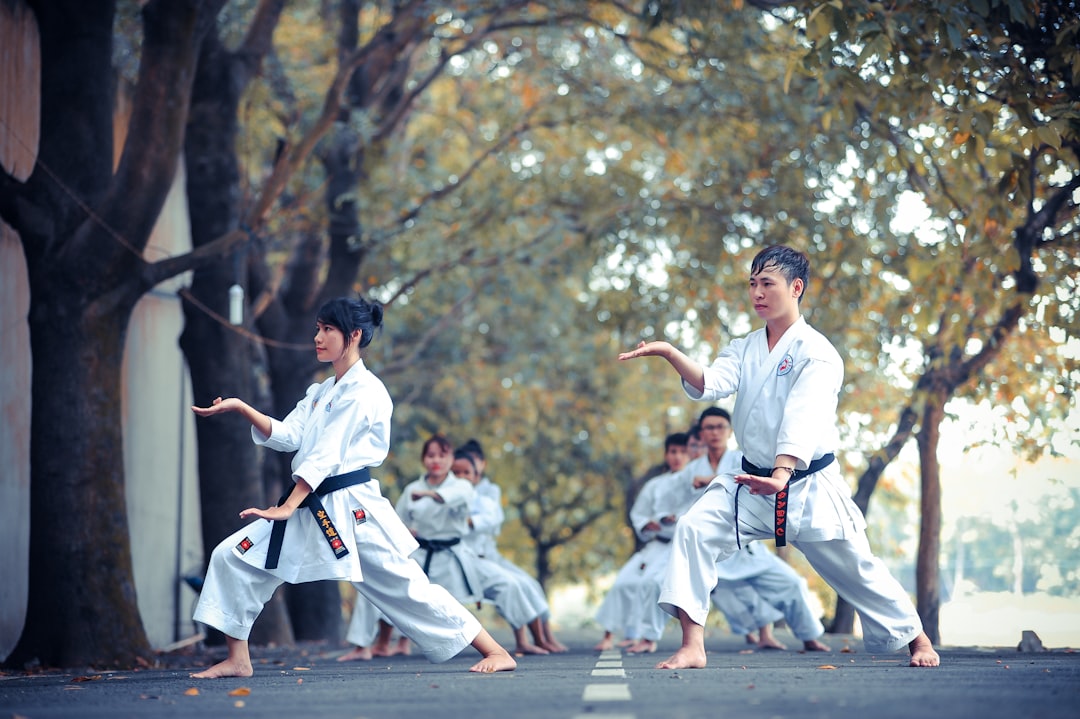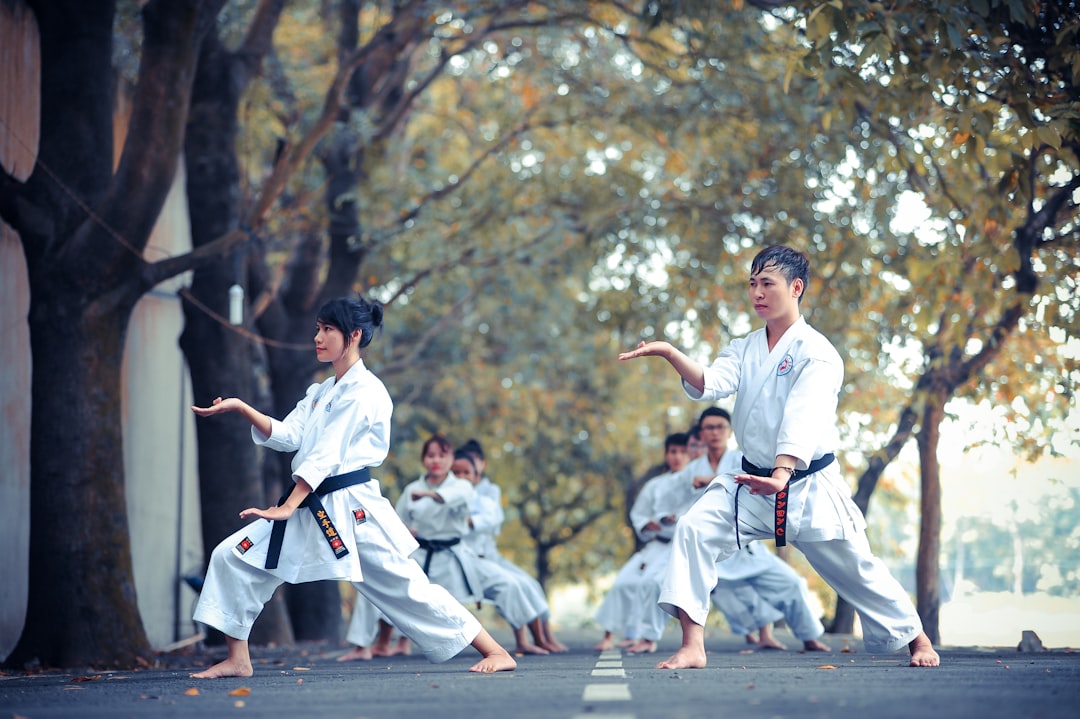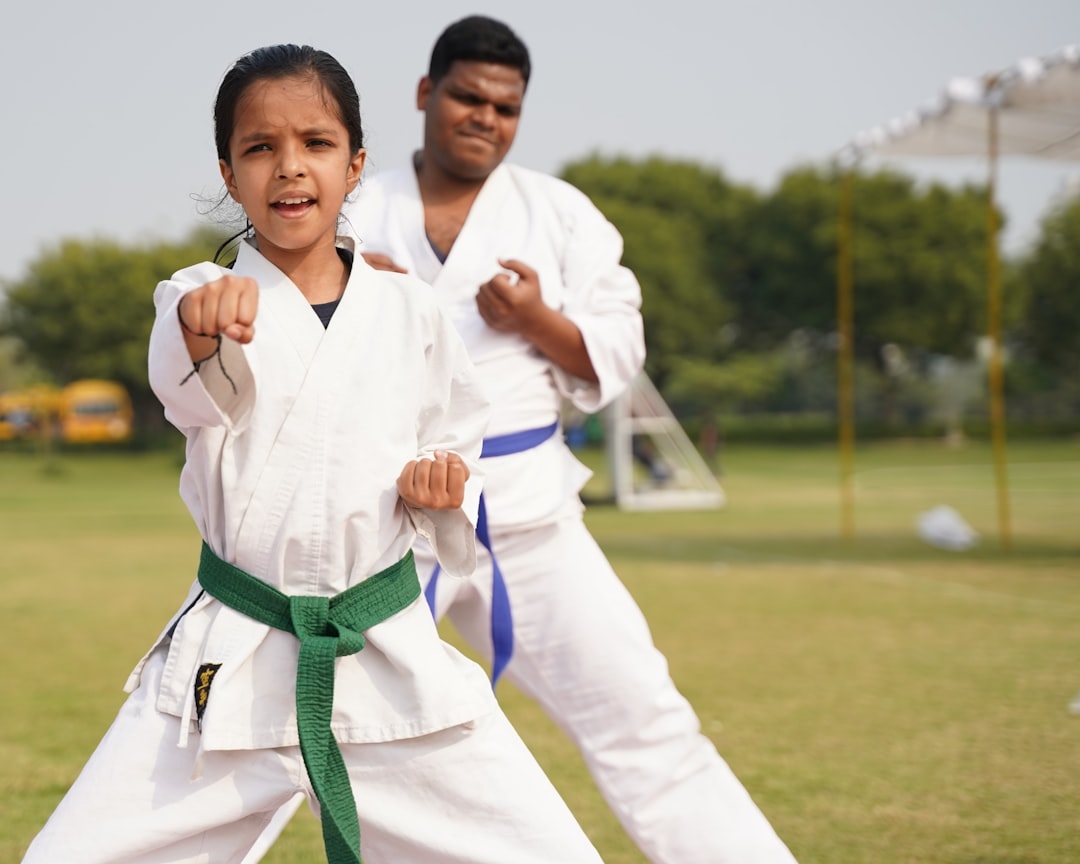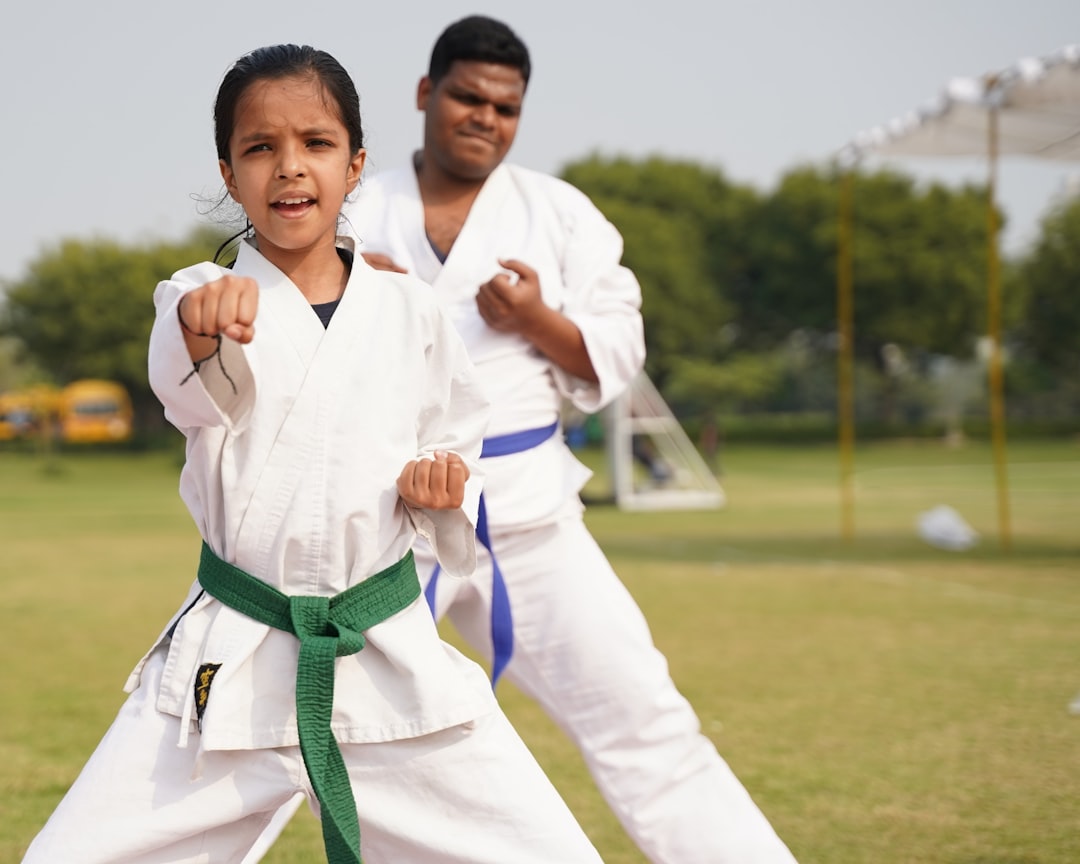The karate gi is a central symbol and functional element in the practice of karate, deeply embodying the discipline's values of humility, respect, self-improvement, and community. Historically, the gi has evolved to balance tradition with modern needs, incorporating protective elements like reinforced knees and elbows, and adopting materials that improve comfort and performance, such as those with moisture-wicking properties. The standard keikogi consists of a white cotton jacket with no collar and matching trousers, secured by side ties, and an obi belt. Choosing the right gi is crucial for its functionality during training, with considerations for material durability, breathability, and fit, ensuring comfort and tactile sensitivity. Proper care of the gi, including careful washing, air drying, and steaming rather than ironing, extends its lifespan and upholds the respectful practice of karate. The karate uniform's significance extends beyond its physical attributes, representing a practitioner's commitment to the art and its underlying principles.
Karate enthusiasts often wonder about the garments that define their practice. The attire, often referred to as a karate suit or gi, is more than mere clothing—it’s a symbol of tradition and discipline within the martial arts community. This article delves into the specifics of karate uniforms, from their historical evolution to the characteristics that make them functionally and culturally significant. Whether you’re a seasoned practitioner or new to the dojo, understanding the karate uniform name and its significance will enhance your martial arts journey. Join us as we explore the essentials of karate uniforms, from selecting the right one for your practice to maintaining its integrity over time.
- Understanding the Essentials of Karate Uniforms: The Gi Explained
- The Evolution of Karate Attire: From Traditional Gis to Modern Uniforms
- Key Characteristics of a Standard Karate Suit
- Choosing the Right Karate Uniform: Factors to Consider for Practitioners
- Caring for Your Karate Gi: Maintenance and Longevity Tips
Understanding the Essentials of Karate Uniforms: The Gi Explained

Karate practitioners adorn themselves with a garment that is both functional and symbolic, known colloquially as a karate gi. But what exactly constitutes a karate gi, and why is it so integral to the practice? A karate uniform, or gi, typically consists of a jacket and trousers made of sturdy cotton fabric. The top, or jacket, is usually white, buttoned up the front, and has no collar, allowing for a full range of motion during practice or competition. The trousers are also traditionally white and fasten with side ties or belts, accommodating the various movements required in karate. The design of the gi facilitates learning and respect within the martial arts community, serving as a blank canvas that signifies humility and readiness to receive instruction. Is the gi solely a uniform, or does it carry deeper significance? Beyond being a mere garment, the gi is a representation of discipline, tradition, and respect for the art of karate, as well as one’s fellow practitioners and instructors. It is a daily reminder of the commitment to personal growth and mastery over oneself.
The Evolution of Karate Attire: From Traditional Gis to Modern Uniforms

Karate’s origins trace back centuries, and the evolution of its attire reflects both tradition and modern sporting influence. Initially, practitioners wore minimalistic garments that allowed for full range of motion, which were later replaced by more standardized uniforms known as ‘keikogi’ or karate uniforms in Japanese. These traditional gis, characterized by their white cotton fabric and simple design with a belt—or obi—around the waist, are still widely used today, especially in formal dojos. The keikogi serves a practical purpose, providing durability during practice while being breathable enough for intense physical activity. Over time, the design of the karate uniform has adapted to meet the needs of both traditionalists and competitive athletes. Modern iterations often incorporate elements such as reinforced knees and elbows for protection, and some may include features like moisture-wicking materials or specific fits for enhanced performance. The evolution of the karate uniform, from its humble beginnings to the diverse forms it takes today, underscores the adaptability and enduring legacy of this martial art. What are the key changes in the karate uniform over time? The key changes include the addition of reinforced areas for protection, the introduction of materials that enhance comfort and performance, and the overall shift from a purely traditional garment to one that caters to both ceremonial and practical needs within the sport.
Key Characteristics of a Standard Karate Suit

When engaging in karate, the attire of choice is a karate suit, also known as a gi. A standard karate suit comprises a jacket, trousers, a belt called an obi, and sometimes a headband, which are all designed to facilitate movement while providing durability and comfort. The jacket, or uwagi, is typically made of cotton or hemp and reaches down to mid-thigh length, allowing for full range of motion during various karate moves. It fastens with buttons running from the right side down to the left. The trousers, known as hakama in some martial arts, are straight-legged and secured at the waist by the obi, which also holds the jacket in place. The color and style of the gi can vary depending on the dojo’s tradition or the specific karate style being practiced, but they all serve the key purpose of providing a uniform that is both functional and indicative of the wearer’s rank within the discipline. What is the typical material used for a karate suit? The standard material for a karate suit is cotton or hemp; these materials offer both durability and comfort, which are essential for practitioners to perform their techniques effectively. How does the belt in a karate suit function? The belt, known as an obi, serves to tie the jacket and trousers together, maintaining the uniform’s shape and integrity during practice or competition.
Choosing the Right Karate Uniform: Factors to Consider for Practitioners

When selecting a karate uniform, commonly referred to as a “gi” or “keikogi,” practitioners should consider several key factors to ensure both functionality and comfort during training. The first consideration is the material of the gi. Typically made from cotton or a cotton-polyester blend, the fabric should be durable yet breathable to withstand the rigors of karate practice without causing discomfort due to excessive heat or moisture retention. Is the material lightweight and does it allow for ease of movement? A high-quality fabric will not only be more resistant to wear and tear but also provide a better feel for the opponent’s movements during contact exercises.
Another important aspect is the fit and size of the gi. It should not be too tight, as this can restrict movement and cause discomfort, nor should it be too loose, which may result in the garment catching on objects or becoming a hindrance during techniques. How does the uniform fit around the shoulders, chest, and arms? A properly fitted karate gi will stay in place throughout training, ensuring that you can focus on your practice without worrying about adjustments or readjustments. Additionally, consider the color and style options, as many dojos have specific requirements for their students’ uniforms. What are the color codes and styles preferred by your dojo or karate organization? Selecting a gi that adheres to these guidelines will show respect for your instructors and fellow practitioners while also demonstrating your commitment to the martial art.
Caring for Your Karate Gi: Maintenance and Longevity Tips

When it comes to maintaining your karate uniform, commonly known as a gi, its longevity and performance can be significantly influenced by how well you care for it. The gi is not just a garment; it’s a symbol of respect and tradition in the martial art of karate. To ensure your gi remains in optimal condition, consider these maintenance tips. Firstly, always check the care label before washing to adhere to any specific instructions provided by the manufacturer. Is the gi made from cotton or a blend? This information will guide you on the best washing practices. Typically, a gentle cycle using cold water is recommended to protect the fabric and avoid shrinkage.
After washing, air drying the gi flat is preferable to machine drying, which can cause the material to lose its shape and become brittle over time. If creases or wrinkles appear after drying, can you carefully steam the gi and gently smooth out the fabric? Steaming can help restore the gi’s original form without the need for harsh ironing that might damage the fibers or alter the weave. Additionally, regular spot cleaning is essential to remove any stains or odors promptly, preventing them from setting in. Proper care of your karate uniform, also known as a gi, will not only extend its lifespan but also maintain its integrity during practice and competitions.
In conclusion, the karate uniform, commonly known as a gi, is far more than mere attire; it is a symbol of tradition and a garment that serves a practical purpose in the practice of karate. From its origins to the present day, the evolution of the karate suit has been shaped by both cultural significance and functional necessity. When selecting a karate uniform, practitioners must consider not only the durability and fit but also the material and style that align with their training needs and the principles of karate. Proper maintenance ensures that the gi remains a reliable tool for practice and a respectful nod to the discipline’s rich heritage. Whether you are a beginner or an experienced martial artist, understanding the karate uniform name and its significance is integral to embracing the full experience of this martial art.
